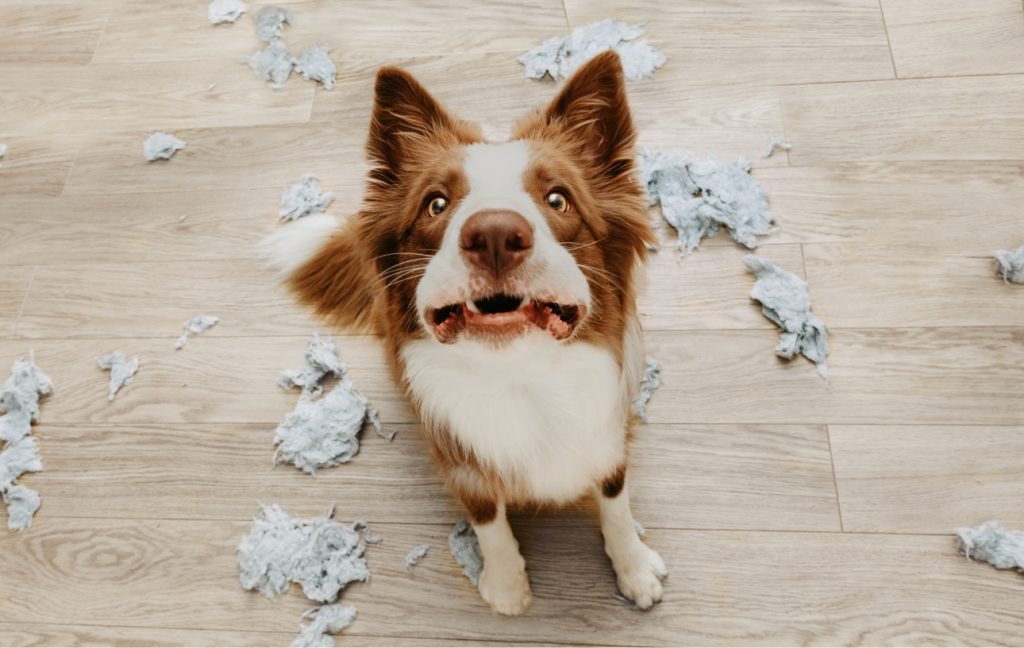Many pet parents assume their dog’s destructive behavior when left alone is due to separation anxiety. But did you know that not all dogs wreck the house because they’re anxious? Some simply get bored and take the opportunity to throw a solo party. We call them “Party Dogs.”
🎉 What is a “Party Dog”?
These dogs aren’t anxious—they’re just having fun. When the owner is away, they feel free to do things they couldn’t do while being watched. It’s a bit like how we were when we were young. They’re not panicking; they’re bored and looking for entertainment.
In contrast, dogs with separation anxiety start showing signs of distress as soon as the owner leaves. Party dogs, however, remain calm and later start exploring ways to keep themselves entertained, which often ends in chaos.
🧪 How to Tell the Difference: Separation Anxiety vs. Boredom
Here’s a simple checklist to self-diagnose your dog’s behavior:
Howling or Barking – If your dog howls right after you leave, it’s likely calling for you.
Accidents in the House – Urination or defecation due to loss of control can indicate high anxiety.
Destruction Near Doors – If your dog damages areas near entryways, that’s a strong sign of separation anxiety.
👉 The most accurate method? Record your dog for 30 minutes after you leave. Also, check for dried drool patches or sticky residues.
These could be signs of excessive salivation, another symptom of anxiety.
🧠 What Causes Separation Anxiety in Dogs?
Just like human infants, dogs emotionally attach to their caregivers.
Studies show that human babies develop separation anxiety between 6–15 months, peaking around 3 years old. Emotionally, dogs are comparable to 2.5-year-old toddlers.
So, it’s not unusual for them to experience anxiety when left alone.
But not all dogs react the same.
Some adjust well, while others cannot regulate their emotions. It’s not because you “spoiled” them. Genetics and early social experiences play a role.
💭 Anxiety vs. Fear: Understanding the Emotions
Fear: Reaction to a real, immediate threat (e.g. a burglar in your house).
Anxiety: Reaction to an uncertain or future threat (e.g. “Will my owner come back?”).
Dogs with separation anxiety suffer because they don’t know when or if their owner will return.
Establishing a consistent routine—leaving and returning at the same time—can reduce this uncertainty and ease their anxiety.
🚫 Common Misconceptions
1. “My dog is getting back at me!”
Not true. Dogs don’t have revenge or guilt emotions. If your dog urinates on your bed when you’re gone, it’s likely due to stress, not payback. Scolding them only worsens their trust and fear.
2. “Should I get another dog as a companion?”
Separation anxiety is about you, not about loneliness for other dogs. In many cases, bringing in another dog can make things worse—now you have two anxious dogs.
📹 Should You Talk to Your Dog Through a Pet Cam?
New pet cams allow owners to talk to their pets remotely. Sounds comforting, right? Actually, it can increase anxiety.
Imagine being scared and hearing your loved one’s voice but not being able to see or smell them. It can heighten your dog’s distress rather than calm it. Use the camera to observe, not to interact.
❗Should You Say “I’ll be back” Before Leaving?
Surprisingly, no.
If your dog associates that phrase with you leaving, it becomes a trigger. Instead, prepare your things in advance (even 2 hours ahead) to avoid raising suspicion. Leave quietly without a dramatic goodbye.
Even something as small as putting on a mask—if you only do it before leaving—can become a trigger. In that case, put the mask on right before stepping out.
💊 What Helps? Routine, Support, and Sometimes Medication
Recent studies show that dogs with separation anxiety often have low levels of serotonin—the same hormone involved in human depression.
So while training and desensitization are essential, medication may also be necessary for some dogs.
Ignoring the issue not only makes your dog suffer—it can emotionally drain you as well. If you’re struggling with your dog’s separation anxiety, don’t hesitate to consult a professional.



